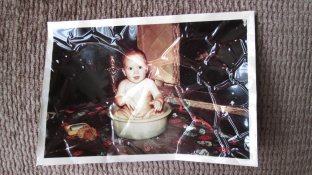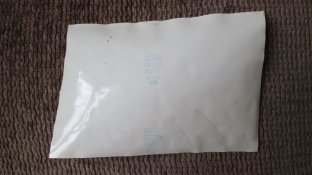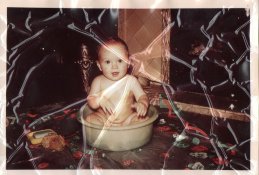DrFeelgood
Member
Hello,
In my family photo album, I have an Ilford April 1958 photograph which until very recently has been perfect and stored with many others in a photo album in a box. However, it has now appeared to have shrunk causing the photo paper to curl and create a wrinkle effect in the covering acetate (?, I'm obviously no expert in photographic processes so please bear with me). To scan the photo and re-touch digitally using Photoshop or similar would be a monumental task and, I'd say, impossible. Attached are two photographs of the original and one scanned copy to highlight the problem.
Can whatever caused this shrinking be reversed somehow if the cause was raised/lowered air temperature during storage? I would be very grateful for any advice or suggestions to save this only example of the subject matter and cannot be replaced.
Mark
In my family photo album, I have an Ilford April 1958 photograph which until very recently has been perfect and stored with many others in a photo album in a box. However, it has now appeared to have shrunk causing the photo paper to curl and create a wrinkle effect in the covering acetate (?, I'm obviously no expert in photographic processes so please bear with me). To scan the photo and re-touch digitally using Photoshop or similar would be a monumental task and, I'd say, impossible. Attached are two photographs of the original and one scanned copy to highlight the problem.
Can whatever caused this shrinking be reversed somehow if the cause was raised/lowered air temperature during storage? I would be very grateful for any advice or suggestions to save this only example of the subject matter and cannot be replaced.
Mark













